Charting the life and times of the Ford CVH engine which powered everything from Escort to Morgan.
When the wraps came off Project Erika, the third-generation Ford Escort, in 1981 it represented not only a departure from the traditional rear-drive layout but also from a hand-me-down engine range which had been doing service in smaller European Fords since the early postwar years.
Under Uwe Bahnsen’s signature bonnet eyebrow – extended to create that distinctive front lip in the pursuit of aerodynamics – was found a brand new engine dubbed CVH, the acronym standing for Compound Valve angle, Hemispherical head and reflecting the fact that most development had centred around the cylinder head and combustion chamber.
Ford was said to have been influenced by Honda’s CVCC engines and even considered a twin-cam layout which was swiftly rejected on the grounds of cost and complexity. The solution was a hemispherical combustion chamber achieved by valves operating at an included angle of 45° with a 7° offset to permit use of a single camshaft. This resulted in a prominent swirl effect within the combustion chamber which ensured a cleaner burn and hence improved emissions and power over the previous generation.
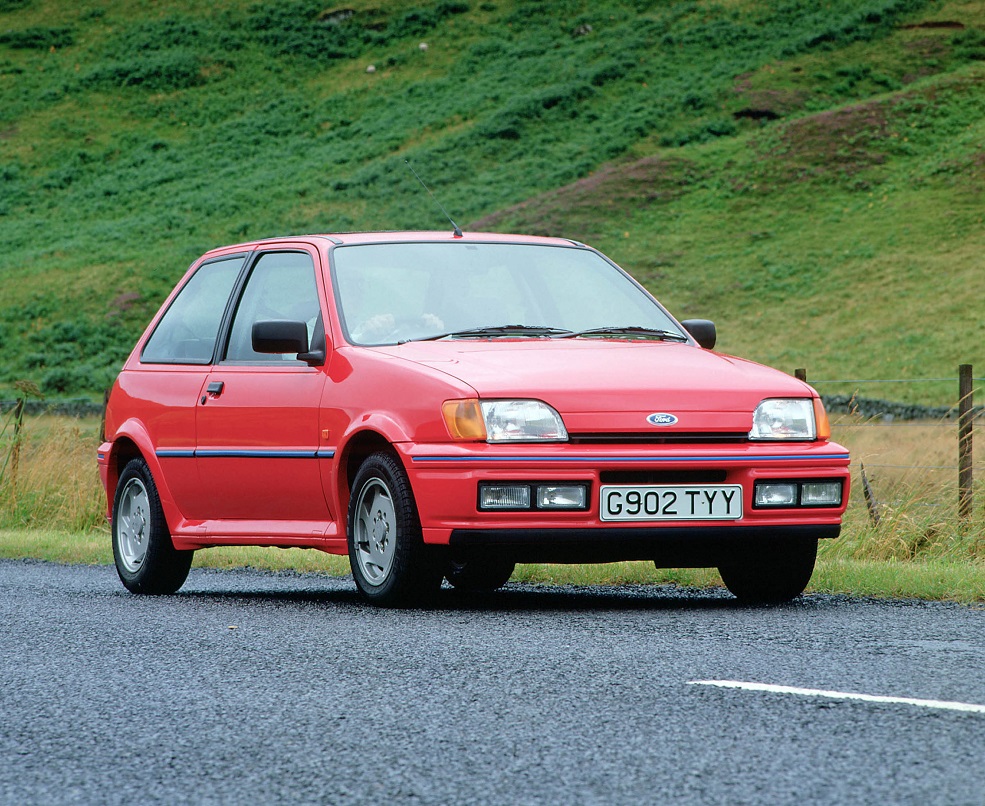
Development of the new engine had cost a massive £500m, which was as much again as the rest of the car and included a new engine plant at Bridgend.
The CVH was very much an international product and would be used in both European and American Fords, the Stateside version of the engine growing ultimately to 1.9 and then a full 2 litres, components of which were popular with European tuners extracting more power from the UK version.
We didn’t get the big-bore CVH here in Europe, but what we did get was the turbocharged incarnation which in the hands of the aftermarket proved the strength of the basic design, with properly built engines producing a reliable 200bhp and more.
The Ford CVH engine wasn’t found only the Escort though: it was found in everything from Fiesta to Sierra and even showed up in the early Focus, albeit for the American market only. Meanwhile, the CVH was as popular as its predecessors with the small-volume makers and the engine appeared in countless specialist cars as well as better-known creations like the Reliant Scimitar SS1 and the Morgan 4/4. Here are some of the highlights.

Ford Fiesta
The Ford Fiesta was the first British-market Ford to embrace the front-wheel drive age but at its launch in 1976 predated the CVH engine by five years. The Mk1 Fiesta was powered exclusively by the long-serving Kent Crossflow engine which was even employed in 1600 form to good effect in creating the XR2.
The Fiesta would evolve into a second generation in 1983 – more an extensive facelift than an all-new design – and initially retained the old Kent engines in 1.0 and 1.1 form, but in 1984 these were joined by the 1.3-litre CVH, while the 1.6-litre version was dropped in to create a new XR2. It was the taller block of the CVH which had necessitated the front-end styling changes, specifically the higher bonnet line.
The Mk2 would also be one of the first Fords to receive the new ‘lean burn’ engine from 1986. Developed from the CVH, this was a 1.4-litre using a revised cylinder head to operate on a leaner mixture under part load conditions.
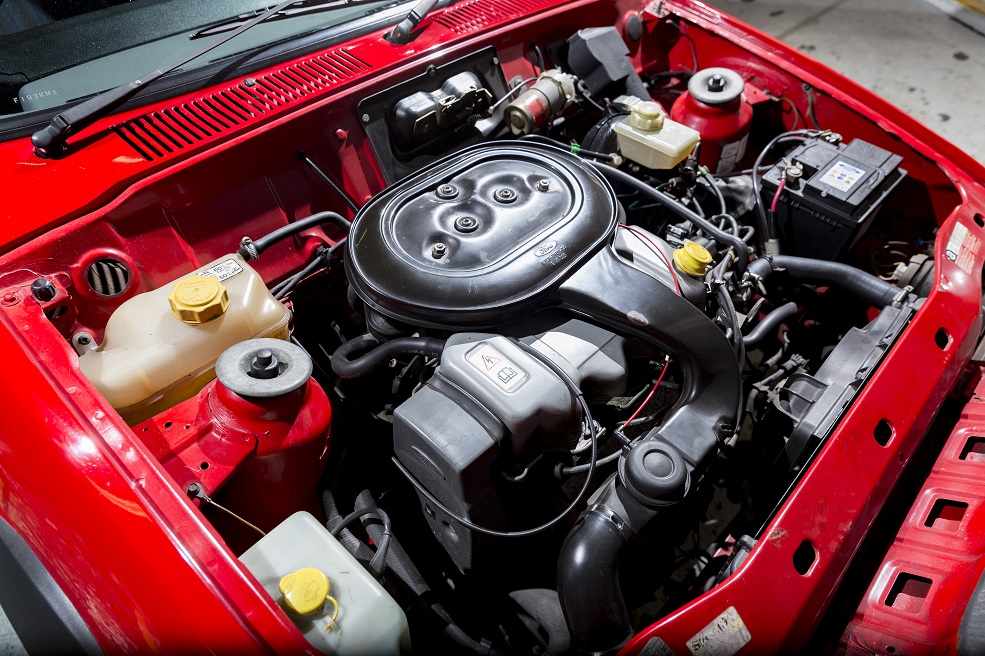
An all-new Fiesta appeared in 1989 and sat on an entirely new platform, developed with the ability to offer a four-door model in order to compete with the likes of the Peugeot 205 and even the Metro.
Mechanically, the CVH engines were continued but the new chassis offered improved ride and handling courtesy of semi-independent rear end, replacing the dead beam axle with a torsion beam set-up.
A sporting model was present in the line-up from the start and was now badged XR2i, running the 105 bhp fuel-injected 1.6 CVH engine. It wasn’t the range-topper though, since that honour went to the RS Turbo.
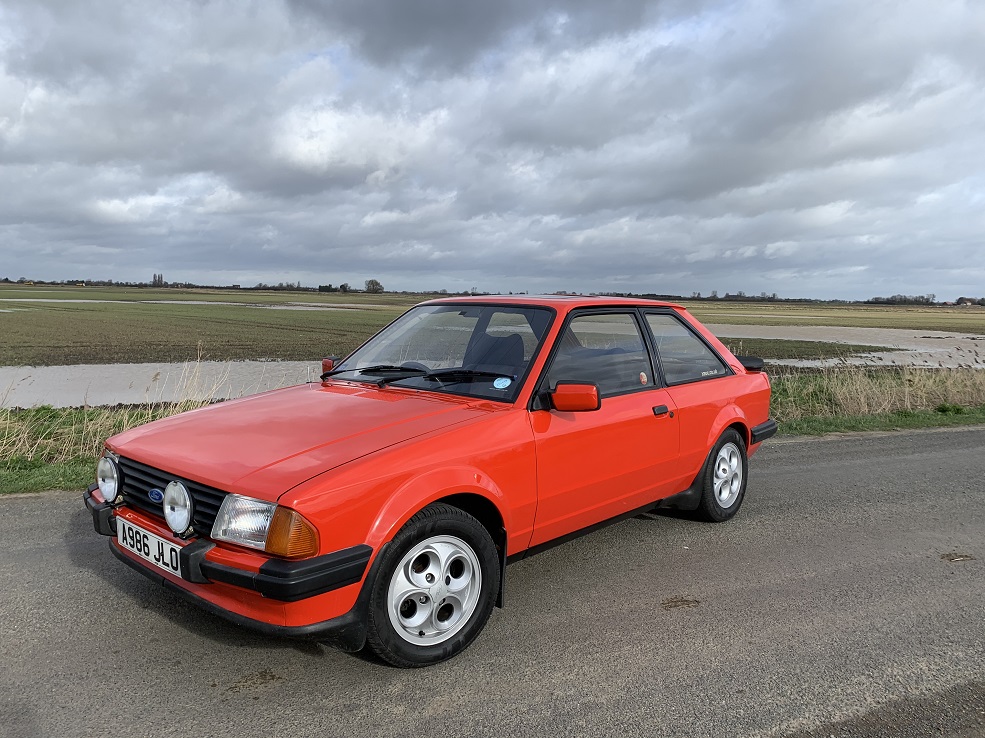
Ford Escort
It’s perhaps fitting that the Escort would employ the CVH for longer than any other Ford model, its use running from the launch of the Mk3 in 1980 right up to the early Mk5s which used the unit until the new Zetec powerplants were hastily fitted in 1992.
Like the Fiesta, the Escort initially employed a mixture of Kent and CVH engines at launch, with the CVH offered in 1.3 and 1.6 models. The Escort would also debut the first go-faster incarnation of the CVH engine in the guise of the 1.6-litre XR3, which with its twin-choke Weber was good for 96bhp.
That was just the start though: in 1981 the hallowed Rallye Sport badge made a reappearance with the RS1600i. The rally-jacketed Ford faithful may have swallowed hard at the thought of a front-drive performance Escort but the facts stood comparison with the RS models of old: the limited-production RS1600i had been developed purely as a homologation exercise for the new Group A regulations and the brief demanded a target of 150bhp. This was duly achieved by fitting fuel injection to the CVH, which along with 9.9:1 compression, solid lifters, enlarged ports and revised camshaft produced a handy 115bhp in road trim. Matched with reworked suspension, sports seats, neat alloy wheels and those strobe-effect graphics, the RS1600i revealed the potential of the CVH for the first time.
It was no surprise then to find the basic recipe forming the basis of a full production model from 1982 in the shape of the XR3i. It’s sometimes assumed that this was based on the RS1600i but the reality is that it’s a very different animal from both the RS and the original XR3. There’s a delightful urban rumour that an early RS1600i was sent over to Dunton from Ford of Germany and the British engineers told to copy it to create an XR3i, but a case of ‘not invented here’ saw it parked round the back and steadfastly ignored while they did their own thing. Whether true or not, it would explain how the production XR3i used the standard car’s 9.5:1 compression, although revised fuel system and manifolding was required, while the suspension was similarly uprated but in a more conventional manner using revised springs and dampers.
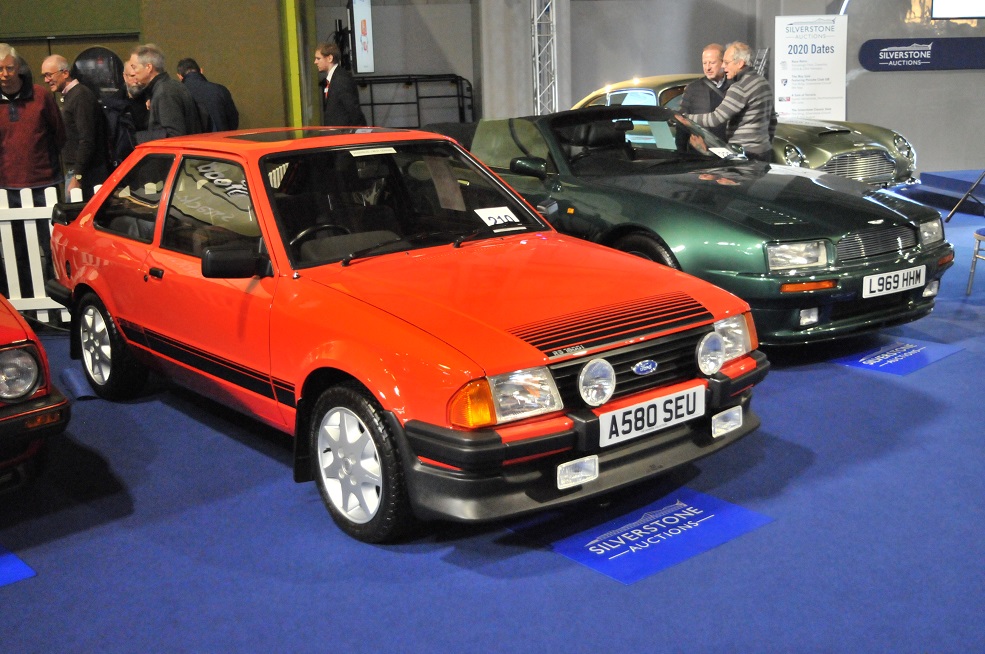
The Mk3 Escort would also introduce the pinnacle of the European Ford CVH engine in the form of the RS Turbo. Like the RS1600i, this was inspired by Group A motorsport which required 5000 examples of a suitably fast Escort to be produced for the road.
The water had been tested with a prototype turbo conversion of an XR3 in 1983 which was later offered as a customer kit for competitors in the Ford Escort Turbo Challenge one-make series.
With the XR3i still yet to appear as a production car, Special Vehicle Engineering team effectively took the limited-production, fuel-injected, five-speed RS1600i as the basis, using its revised suspension as well as the limited-slip differential and fuel injection which had been added to the brief.
The engine was the long-serving 1.6-litre CVH, fitted with a Garrett T3 turbocharger which was technically larger than required for road use but which offered greater power potential for motorsport, while Bosch’s electronic KE-Jetronic injection allowed control of ignition timing against boost. Maximum boost pressure for the standard car was set at 0.5bar and the set-up also received an air-to-air intercooler.
On the outside, the front and rear spoilers looked great in the showroom but also served a more serious role in increasing downforce at track speeds, while the slatted grille allowed more air to reach the intercooler and the wheelarch extensions permitted the racers to use 10-inch wheels.
Offered only in white, with matching RS alloys and a blue stripe, the first-generation RS Turbo was launched in 1985 priced at £9250 and once they got over the front-wheel drive, hardcore Ford fans loved it for its pace.
Tragically, sporting homologation wasn’t granted until June 1985 which meant that the RS Turbo’s competition lifespan was short, since Ford Motorsport moved over to the RS200 Group B car in 1986.

The road car though was a hit and sold 8604 units, of which 5576 came to the UK from the Saarlouis factory where they were built. All of which explains why the RS Turbo was continued into the Mk4 Escort range, where it was now very much a full production model with its unique style suitably toned down.
Further down the range, the 1.3 and 1.6 CVH engines would be joined by the lean-burn 1.4 in the Mk4 generation and the engine would still be doing service when the Escort entered its fifth generation in 1990.
Although essentially a major update of the Mk4 platform, the Mk5 had cost Ford a reported $1bn in development but that sum didn’t extend to a new engine family which meant the 1.4 and 1.6 CVH were carried over, albeit in catalyst-friendly injected form.
Sadly, by then the CVH was falling behind in the refinement stakes and its use was one of the main areas where the new car was savaged by road testers. Stung by the criticism, Ford moved quickly and in 1992 added the new 16-valve Zetec engines which had already been in development.
The new engines transformed the car but it wasn’t quite the end for the CVH: it was retained alongside the Zetec units in 1.4 guise and would continue into the heavily facelifted so-called Mk6 until its replacement by the Focus.

Ford Sierra
The Ford Sierra isn’t the first Ford which springs to mind when the CVH engine is being discussed but the car was in fact the recipient of the largest-capacity CVH to be offered in Europe.
The mainstream engine for the Sierra at launch was the overhead-cam four-cylinder Pinto which was offered in 1.3, 1.6 and 2-litre guises. Familiar to the fleet world from the Cortina days, the Pinto was a good workmanlike engine with only the clacking top end thanks to a blocked camshaft oil feed to spoil the party. It was getting on in years though and by the late ’80s was being phased out as a result of tightening emissions regulations.
The 1.3-litre model had been discontinued early in the Sierra’s life but the 1.6, 1.8 and 2-litre models were key to the car’s competitiveness in the fleet market and received replacements. The 2-litre Pinto was replaced by the ‘I4’ engine which was essentially a twin-cam development of the Pinto, but the 1.8 model received a specially developed version of the CVH engine. Based on the 1.6 CVH but using a longer 88mm stroke, it employed the lean burn technology introduced with the 1.4 engine and also gained roller rockers in an effort to quieten the top-end valvetrain noise, a by-product of the stiff valve springs required by the steep angle of the valves in the CVH head. Producing 80bhp, it was a worthy update of the CVH but was only ever offered in the Sierra.
Meanwhile, the 1.6-litre Pinto soldiered on until late in the day, being replaced in 1992 by the 1.6-litre Ford CVH engine.
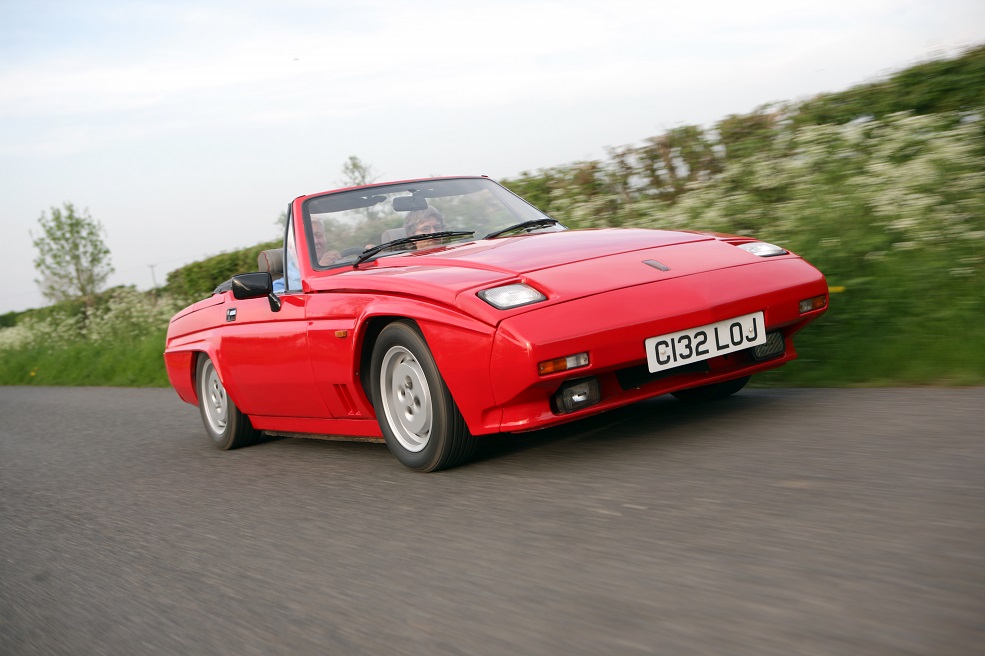
Reliant Scimitar SS1
Reliant had been using Ford power since 1964 in its full-sized Scimitar so it was no surprise that it turned to the Blue Oval to supply a powerplant for its SS1.
An intriguing creation, the ‘Small Sports’ is one of those cars which leaves you wondering why it didn’t fare better; in fact, why it wasn’t a roaring success. Predating the MX-5 by half a decade, the SS1 on paper seems like an ideal recipe for a reborn traditional sports car: independent suspension all round, a backbone chassis and lightweight bolt-on composite panels should have made it a winner.
Michelotti’s styling may have had a functional edge to it but was very much of the time and the car was fun to drive thanks to the CVH engine which was offered in 1.3 and 1.6 forms. Curiously, Reliant used the CVH engine in a longitudinal installation long before Ford itself did so.
The original SS1 was restyled by William Towns to create the dramatic SS2 which was toned down for production as the SST, engine options including the 1.4 CVH alongside not the RS Turbo engine but a Nissan turbo unit. The SST would itself be facelifted in into the Sabre in 1992 but would gain Rover K-Series power and the SS would now out altogether in 1995.
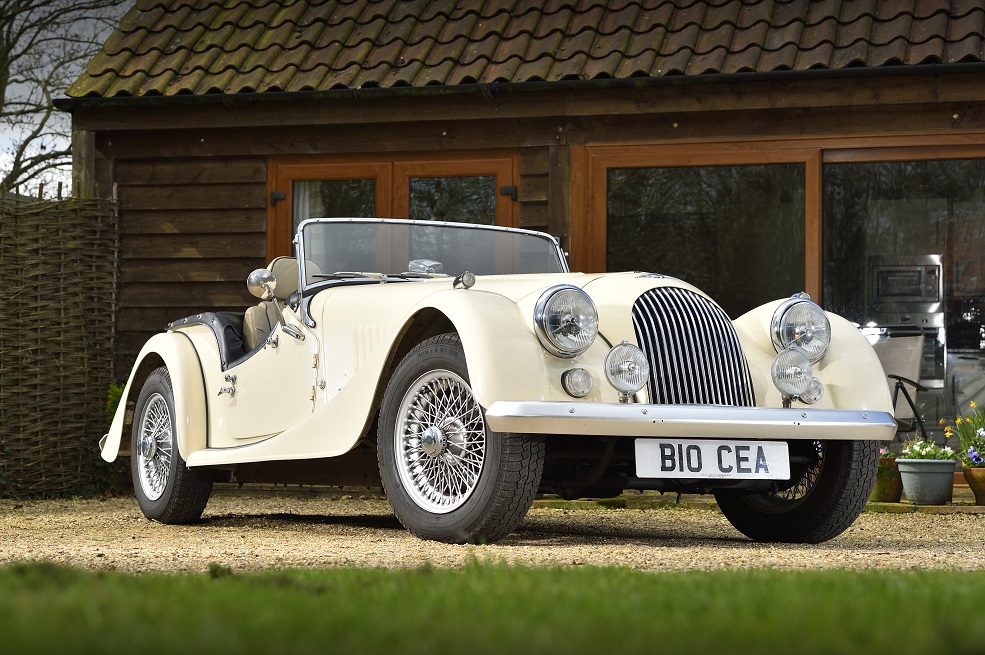
Morgan 4/4
Morgan may be firmly in the shadow of BMW these days but back in the 1960s it was another stalwart Ford customer. Morgan’s first four-wheeled, four-cylinder car (hence the name 4/4) had first appeared in 1936 and resumed proper production after WW2 with a specially-developed Standard engine, but disappeared shortly afterwards in 1947 when Standard discontinued the unit. In 1954, the 4/4 reappeared with a Ford sidevalve engine and box, the so-called Series II model gaining the chassis of the more powerful Plus Four model and the familiar radiator style which really hasn’t changed much since.
The 4/4 gained Ford’s 1500 OHV engine in 1962 and from 1968 would be powered by the Kent Crossflow, but in 1982 Morgan would become the first outside customer for the CVH engine.
Like Reliant, Morgan used the CVH in a rear-drive layout long before Ford itself and the CVH was a long-lived feature of the firm’s line-up. Morgan used the 1.6-litre version of the engine, initially carb-fed in 86bhp form, together with a four-speed gearbox. From 1984 the Sierra’s five-speed unit was fitted and from 1991 the engine gained single-point injection to take it up to 110bhp. In 1992, the 4/4 gained the new Zetec engines alongside the Mk5 Escort.

The ultimate CVH?
In Europe, the CVH maxed out at 1.8 litres in the Sierra and was at its most powerful in the 132bhp RS Turbo models, but over in the USA the engine took an entirely different development path. Initially the European and US engines were largely similar in their basic layout, but in 1986 the US market received a 1.9-litre version which employed a thicker and taller block to accommodate its larger 82mm bore and the same 88mm stroke used for the later Sierra 1.8. It also employed the roller lifters used in the Sierra engine to improve refinement. In true Federal style, it was no performance weapon despite the extra capacity, turning in just 108bhp even with multi-point injection.
From 1997, the engine was enlarged further to a full 2 litres and proved to be a popular unit thanks to its good fuel economy. Good enough in fact to be fitted to the first-generation Focus for the US market. Impressively, it would last in this guise until the first-generation Focus was replaced in 2004.




